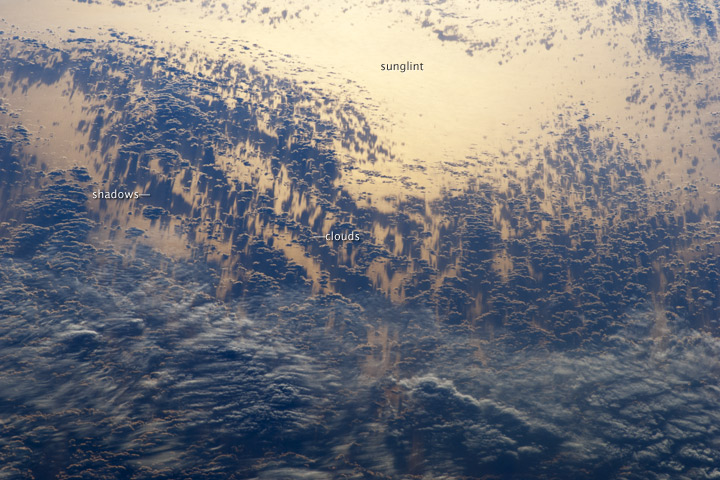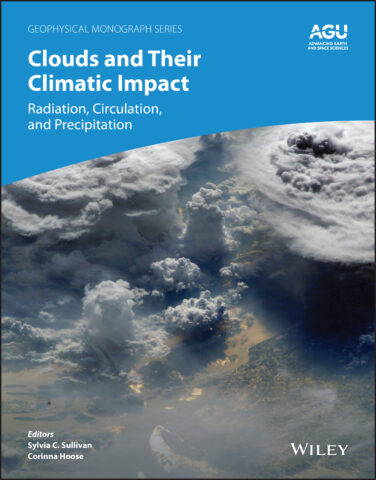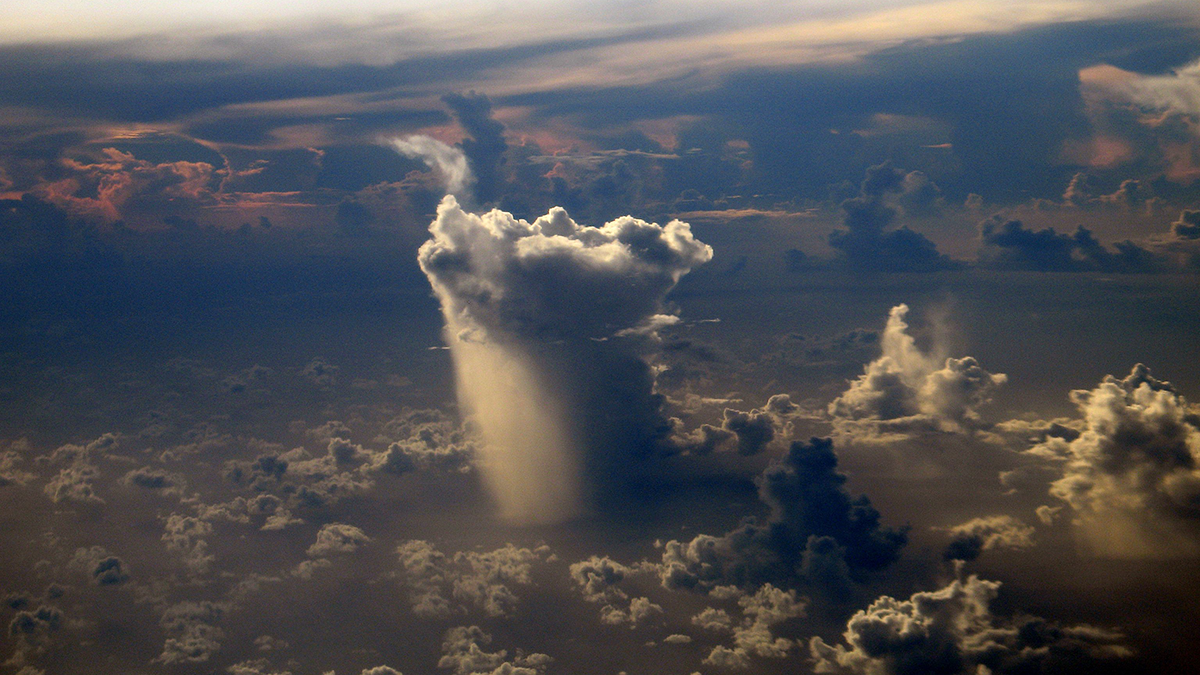Editors’ Vox is a blog from AGU’s Publications Department.
Clouds are an influential and complex element of Earth’s climate system. They evolve rapidly in time and exist over small spatial scales, but also affect global radiative balance and large-scale circulations. With more powerful models and extensive observations now at our disposal, the climate impact of clouds is receiving ever more research attention.
A new AGU book in the Geophysical Monograph Series, Clouds and Their Climatic Impact: Radiation, Circulation, and Precipitation, presents an overview of our current understanding on various types of clouds and cloud systems and their multifaceted role in the radiative budget, circulation patterns, and rainfall. We asked the editors to tell us about their book.
How did you first get interested in clouds?
Corinna: Ever since my undergraduate studies in physics, I have been intrigued by the enormous challenge to understand and predict clouds. Cloud physics bridges scales from nanometer-sized aerosol particles to large-scale cloud regimes and global-scale climate impacts, which makes it really interesting.
Sylvia: I am an engineer by training but was always fascinated by environmental systems. Interesting parallels exist between natural and anthropogenic systems, for example the modeling of ice formation in clouds versus nucleation within industrial crystallizers. I think for both of us, the beauty of clouds was another motivation, along with their relevance and familiarity to lay people.

What are the main ways to categorize clouds and cloud systems?
As early as 1803, a British meteorologist named Luke Howard had published a classification of clouds that is still used today.
He used cumulus, stratus, and cirrus to describe low and isolated liquid clouds, layer clouds, and high and isolated ice clouds respectively. Inspired by animal classifications with kingdoms, phyla, and other subdivisions, he also proposed subclasses of clouds like cirrostratus, cumulonimbus, and nimbostratus.
This decomposition of clouds both in terms of their altitude and depth has survived more than two centuries later and is used, for example, by the International Satellite Cloud Climatology Project.
Why have clouds historically posed such a challenge for climate projections?
Imagine you’re sunbathing on the beach. It’s warm, and you’ve got sand between your toes. As you gaze up at the sky from your towel, you can see the cumulus clouds actively changing form and moving across the sky. At some point, a thick one rolls in front of the sun, and you’re suddenly cool in the shade.
This little scene illustrates that clouds evolve fast, sometimes over small portions of the sky, but that they still strongly influence the surface. This complexity makes cloud difficult to capture in our coarse-resolution atmospheric models, but it remains an essential component of Earth’s energy balance.

How is the material in your book organized?
There are three main sections that explore radiation, circulation, and precipitation as three important ways in which clouds influence climate. Clouds absorb infrared radiation from Earth’s surface and reflect sunlight (as when you are on the beach!), changing atmospheric and surface temperatures. This absorption and reflection, along with latent heat release by clouds, changes atmospheric pressure gradients and flow from the Jet Stream to the Hadley Cell. Finally, clouds are the source of precipitation. Different chapters concentrate on research motivated by these three impacts. We also focus some chapters on certain cloud types for which these impacts are particularly strong, including mixed-phase (both liquid and ice) clouds in the Arctic and cumulus and stratocumulus over the tropical oceans.
What are some recent advancements that have fueled progress in understanding clouds and their impact on climate?
We are in a very data-rich era for studying clouds and climate, both in terms of observations and model output. As some examples, the NASA CloudSat satellite and CALIOP instrument have been measuring global cloud properties since 2006, and the ESA/JAXA EarthCARE satellite will be launched next year to retrieve cloud, aerosol, and radiation data.
The sixth iteration of the Coupled Model Intercomparison Project (CMIP6) involved output from approximately 100 models and 50 modeling centers around the world. Also, a new generation of much higher-resolution frameworks, called storm-resolving or convection-permitting models, now facilitate more realistic simulations of clouds and cloud systems. This wealth of output shifts our research needs from data collection more toward data curation, sharing, and analysis.
What new perspectives does your book bring to the literature on clouds and climate?
Because clouds and climate research are so active, there are already several volumes published. We start our book with an analysis of the overwhelming research growth in this area over the past few decades. To distinguish our effort, we wanted to organize chapters around impacts as mentioned above.
[Early-career] researchers will carry the field forward in coming decades, and we wanted to highlight their perspectives on the most important recent advances and challenges ahead.
We also sought early-career lead authors. Almost all our lead authors wrote their chapters in postdoctoral or assistant professor positions, and our contributors came from more than 15 different countries. These researchers will carry the field forward in coming decades, and we wanted to highlight their perspectives on the most important recent advances and challenges ahead.
Who is the intended audience for this book?

Our goal is to provide a “lay of the land” for new graduate students in this diverse and rapidly evolving field of research. For those gaining independence as researchers, our hope is to direct their time and energy toward high-impact problems. And for those even farther along their career trajectory, we wish to facilitate collaborations across subfields and highlight the foci of younger researchers.
Clouds and Their Climatic Impact: Radiation, Circulation, and Precipitation, 2023. ISBN: 978-1-119-70031-9. List price: $215.95 (hardcover)
Chapter 1 is freely available. Visit the book’s page on Wiley.com and click on “Read an Excerpt” below the cover image.
—Sylvia C. Sullivan ([email protected], ![]() 0000-0003-0203-3052), University of Arizona, USA, and Karlsruhe Institute of Technology, Germany; and Corinna Hoose ([email protected],
0000-0003-0203-3052), University of Arizona, USA, and Karlsruhe Institute of Technology, Germany; and Corinna Hoose ([email protected], ![]() 0000-0003-2827-5789), Karlsruhe Institute of Technology, Germany
0000-0003-2827-5789), Karlsruhe Institute of Technology, Germany
Editor’s Note: It is the policy of AGU Publications to invite the authors or editors of newly published books to write a summary for Eos Editors’ Vox.

